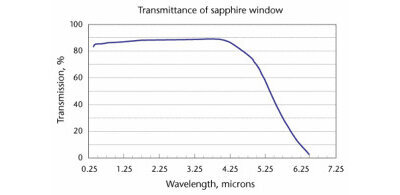Introduction
You may not be aware but you probably have in your hands one of the toughest substances in the world right now. If you own a good quality watch chances are that it has a sapphire glass. Also, some versions of Appla watches and almost all mobile phones use sapphire lenses on their cameras. Sapphire, in its natural form, is a precious stone typically blue in color that is used in jewelry. However, sapphire can be created synthetically and it is this form that is endowed with valuable properties in many industries.
You may wonder what makes sapphire so special. I will go more in detail about its characteristics, but here I will present you with five reason why sapphire is so valuable
-
is really really hard to scratch it. So it’s ideal for camera lenses and watches.
-
Is almost completely transparent for a wide range of wavelengths (infrared to ultraviolet)
-
It can stand a large range of pressure and temperatures without deformation.
-
Very resistive to acids
-
It can be synthetically manufactured
Why do we only see sapphire glass used in very limited applications? Why is it that our mobile phones don’t use sapphire instead of Gorilla Glass (™)? If you own a luxury watch, it probably has sapphire glass, but for the most part, sapphire use is not that widespread.
Well, sapphire is so hard, that is expensive to work with it.
If you are more interested to learn about sapphire, please read the rest of the article and ask us any questions in the comment sections
Optical and Mechanical Properties
One of sapphire’s most well known properties is its hardness. There are different ways to measure the hardness of a material. Two very common ones are the Mohs scale and the compressive/tensile stress. Mohs scale measures the resistance of a material against scratching. It is a qualitative scale with diamonds occupying its highest place, followed by silicon carbide, and, along with some other materials, sapphire in third place. Mohs scale just measures how easy it is for one material to scratch another. There are harder synthetic materials like graphene but graphene is still not fully adopted in industry on a massive scale. An area where sapphire excels is its compressive strength: the pressure it can support before breaking. Sapphire has a compressive strength of around 2 GPa (or the equivalent of having 40 elephants stack on top of each other with the bottom one balanced on a single leg). For comparison, steel has a compressive strength of 250 MPa (almost 8 times less than sapphire), and Gorilla Glass(™) (the industry standard for smart phone covers) has a compressive strength of 900 MPa (less than half of sapphire).
Also of interest is the fact that sapphire has excellent chemical properties being almost inert to all chemicals, making it suitable where corrosive materials are present. It has very low thermal conductivity, 25 W m^(-1) K^(-1), and extremely low thermal expansion coefficient, 5.8×10^6 / Celsius-Degree: it doesn’t deform or expand under high pressure or high heat conditions. Whatever your design is, you can be sure that it will have the same dimensions and tolerances at 100 meters under the sea or at 40K in orbit.
We have used theses properties of strength and scratch resistance windows for customer applications including industrial and medical lasers, underwater camera, and marine environment spectrometers.
Sapphire glass has an excellent window of transmission in the 300nm to 5500 nm range (covering the UV, visible, and infrared region) with a peak in transmission of almost 90% at 300nm-500nm wavelengths. Sapphire is a birefringent material, so many of its optical properties will depend on the crystalline orientation. In its ordinary axis, its refractive index goes from 1.796 at 350nm to 1.761 at 750nm, and it has very small variations even with large changes in temperature.
Because of its good transmission and wide range of wavelengths, we have often used sapphire elements in infrared lens designs when more common glasses are not suitable.
Figure 1. Schott Transmission Curve for Sapphire
If you are designing a satellite lens system where a wide range of extreme temperatures are present, a refractive index optical sensor for acids, a military display where protection from abrasive weather conditions is needed, or monitoring the conditions inside a high pressure chamber, sapphire glass will be your best choice.
Disadvantages
Because of its mechanical properties, sapphire is extremely difficult to work with. Creating large pieces of it is technically challenging and shaping it to specific geometries can be daunting. The same properties that make it so attractive also make it expensive.
Personally, we think that one of the reasons we don’t see more consumer electronics with sapphire is due to the nature of the market itself. Mobile phones, tablets, and laptops have a lifespan of less than 18 months before a new set of models are out in the market. Having a high end material like sapphire will make it extremely expensive for end users. High end watches, on the other hand, are meant to last decades, so using sapphire justify its costs. After several years, mobile phone companies like Apple and Samsung started using sapphire in their high-end products, but only as covers for their camera lens or on their smart watches.
Let us know in the comments if you have had the need to use sapphire in your designs, or if you own a device that has sapphire in it.

